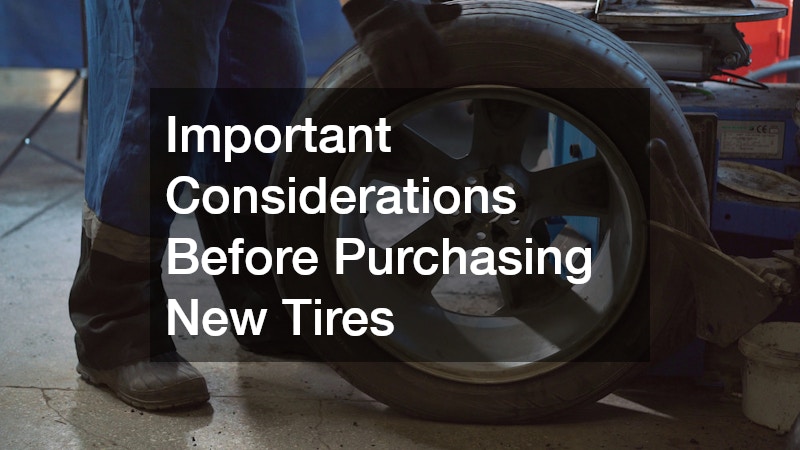
It is important to explore the essential factors you should consider before purchasing new tires for your vehicle. Doing so will help you make informed decisions to ensure safety, performance, and cost-effectiveness.
Choosing the correct tire size for your vehicle is crucial for maintaining optimal performance and safety. Each tire is marked with a code that provides essential specifications, including width, aspect ratio, and diameter.
Video Source
This tire code can typically be found on the sidewall of your current tires. Understanding these specifications helps ensure that your new tires fit perfectly and function as intended.
Your vehicle's manual is an invaluable resource for determining the appropriate tire size. This document often contains the original equipment tire sizes and provides the recommended options for replacement. By consulting the manual, you align your choice with the manufacturer’s specifications, ensuring both safety and compatibility.
All-season tires are a popular choice due to their versatility in moderate climates. They offer a balanced performance in both wet and dry conditions, making them suitable for year-round use. On the other hand, summer tires offer enhanced handling and grip in warm, dry conditions, providing improved responsiveness and efficiency for sports and high-performance vehicles.
For those seeking specialized performance, performance and specialty tires are worth considering. These tires enhance specific aspects of driving, such as speed, handling, or off-road capability. Performance tires, for instance, deliver superior traction and precision, while specialty tires cater to unique driving needs such as mud, snow, or heavy-duty load carrying.
Each type of tire has its own advantages and disadvantages. While all-season tires offer convenience and versatility, they might not provide the optimal grip for extreme conditions. Summer tires excel in warm weather but may lose traction in cooler temperatures. Winter tires are designed for icy or snowy conditions but are not ideal for year-round use due to increased wear and noise levels on dry pavements.
Price is a key consideration when purchasing new tires, but it should be balanced against quality. High-quality tires may come at a higher initial cost but often offer improved longevity and performance, resulting in better overall value. It's vital to assess the total cost of ownership, including savings on fuel efficiency and reduced wear over time.
Beyond the purchase price, consider additional costs such as installation, alignment, and maintenance. Installation fees can vary depending on where you have your tires fitted, while periodic maintenance like alignment ensures consistent performance and prolongs tire life. Understanding these costs will help you set a realistic budget for your tire investment.
Exploring deals and discounts can provide significant savings on tire purchases. Many retailers offer seasonal promotions, rebates, and package deals, reducing the overall cost. However, it's crucial to ensure that deals do not compromise on quality, ensuring you receive genuine and durable tires despite the reduced price.
Maintaining the correct tire pressure is vital for safety, fuel efficiency, and tire longevity. Underinflated or overinflated tires can lead to uneven wear, reduced traction, and increased fuel consumption. Regularly checking tire pressure and keeping it within the manufacturer's recommended range helps preserve tire life and performance.
Regular vehicle alignment and tire rotation are essential practices for ensuring even tire wear. Proper alignment prevents uneven stress on tires, while periodic rotation distributes wear evenly across all tires. These maintenance practices extend tire lifespan and maintain optimum handling and safety for your vehicle.
Regularly monitoring tread wear is crucial for identifying potential issues early. Inspecting the tread depth, looking for foreign objects, and checking for irregular wear patterns can help detect alignment or balance issues. Keeping track of your tires' condition ensures timely interventions that prevent premature replacement and sustain safe driving.
Choosing the right tires for your vehicle involves several considerations, from understanding tire sizes and types to evaluating brands and budgetary constraints. By following the guidelines outlined in this article, you can ensure a safe and satisfying tire purchase that meets your driving needs.
